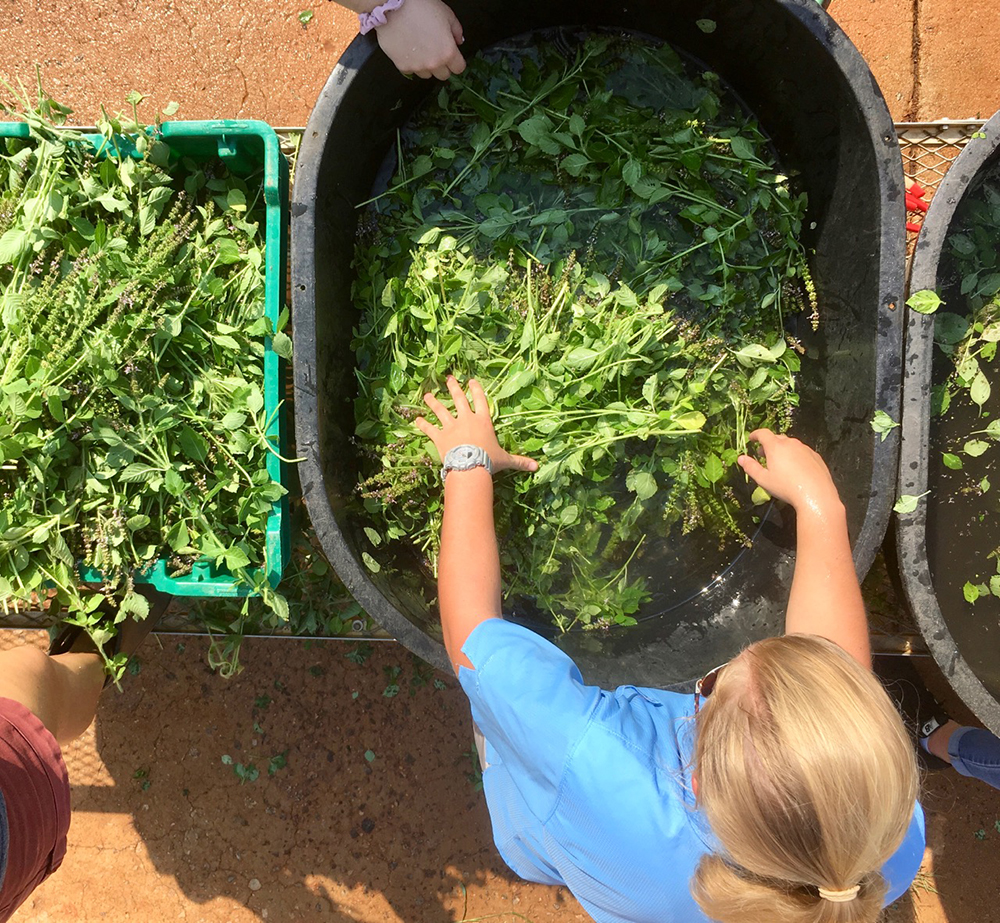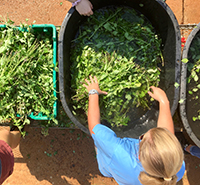Although you may not have the kind of backyard garden that University of Georgia horticulture Professor Jim Affolter has, you might find many natural and traditional remedies hiding in plain sight in your ornamental garden.
“You’d be surprised at how many medicinal plants you may already have in your home landscape,” said Affolter, the Larry R. Beuchat Professor for Annual and Perennial Ornamental Plants Research, during his presentation, “Hidden Pharmacopeia: Your Ornamental Garden is a Medicine Chest,” given at the recent Georgia Green Industry Association Wintergreen 2020 conference.
Using a slideshow to walk participants through Affolter’s own Athens, Georgia, home garden, he pointed out common landscape plants, bushes and trees that can be used for home remedies.
“Nearly every culinary herb is a medicinal plant,” said Affolter who is the director of research at the State Botanical Garden of Georgia at UGA and a researcher in the UGA College of Agricultural and Environmental Sciences (CAES).
In one study, he said, extracts from 30 culinary herbs and spices were tested against bacterial cultures and all of the compounds either inhibited or killed at least 25% of the bacterial species tested.
“The four most potent were garlic, onion, allspice and oregano,” he said.
In fact, the active ingredients in the popular antibacterial mouthwash Listerene are eucalyptus oil, menthol from peppermint, wintergreen oil and thyme oil, Affolter said.
Among the plants in his own yard, Affolter listed a number used in natural remedies for complaints ranging from gas to anxiety, as well as plants whose compounds are used to fight heart disease and cancer, including Bee balm, garlic chives, oregano, salvia, parsley, foxglove, valerian, sage, lemongrass, patchouli, pennyroyal, catnip, Foxglove digitalis, Lobelia, Black cohosh, Yellowroot, wild ginger, Mayapple, Goldenseal, Pecan, Yaupon holly, Brugmansia, Gardenia, Chaste Tree, Rose, winter Daphne, Hibiscus, Dogwood and Madagascar periwinkle.
“Whether you know it or not, when you are walking around your neighborhood or working in your own garden or other gardens, you are probably surrounded by a lot of medicinal plants,” he said. “Having more knowledge about these plants is useful and makes gardening more interesting.”
Noelle Joy Fuller, herb program coordinator at the UGArden student community farm, said the garden grows 40 different medicinal herbs and plants the students use in a line of herbal products sold at local Athens businesses.
Fuller has a master’s degree in horticulture from the UGA CAES and is studying for her doctorate in horticulture with Tim Coolong, associate professor of horticulture at CAES. Her focus is drying and post-harvest processing of hemp.
UGArden grows more than 4,000 herb plants each year for the commercial herb market, and another 3,000 herb plants for use in products. The garden’s main herb crops are holy basil, hibiscus, blue vervain and licorice mint.
“Herbs offer a huge opportunity for growers to think about growing commercially and for home gardeners to grow in their own landscapes. There are so many varieties and the market for medicinal herbs continues to grow,” Fuller said.
To learn more about herbal medicine, visit the American Botanical Council website at abc.herbalgram.org or LearningHerbs.com. Learn more about UGArden at ugarden.uga.edu, on Instagram at @theugarden and Facebook at facebook.com/ugardeners.









